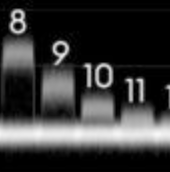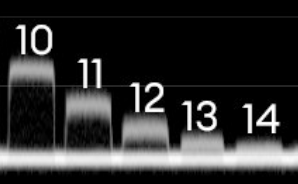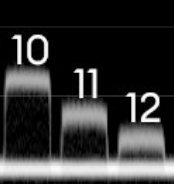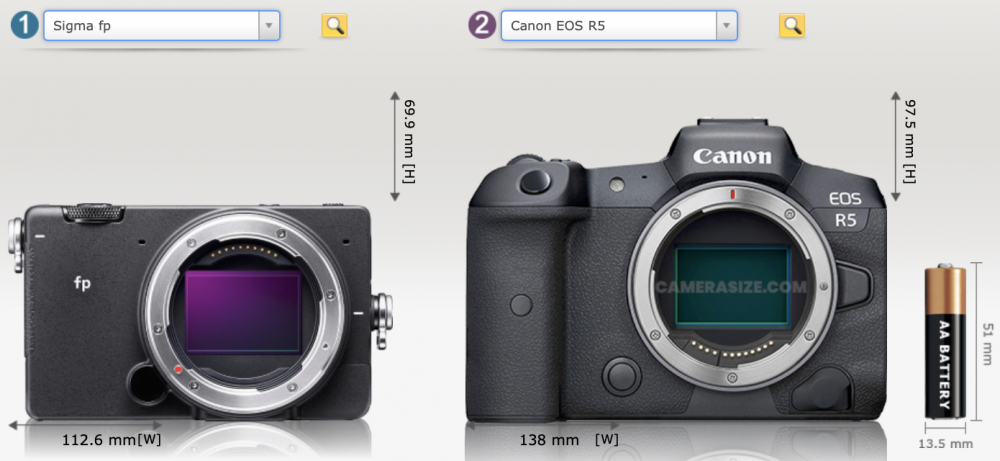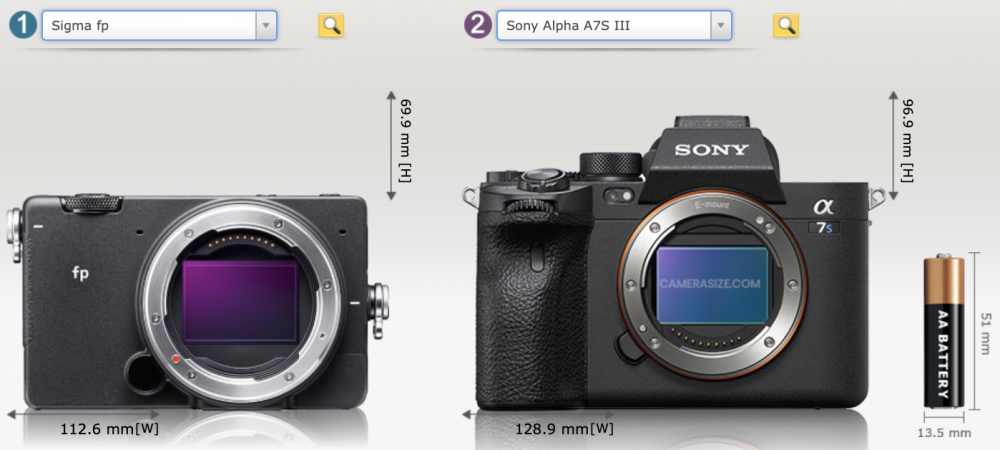-
Posts
7,984 -
Joined
-
Last visited
Content Type
Profiles
Forums
Articles
Everything posted by kye
-
Well, I covered that in my description - people don't care about DR.........IF they're shown ONLY images where it's not a problem for the story. I think I've personally seen about a third of the people I know struggling to take photos of their kids against a bright background and maybe a quarter of them have sworn out loud while struggling with the DR challenge. I'm not that social a person, but just check your Facebook feed to see how many parents of school-age kids are taking pictures of them on their first day back to school in the new year. If you think that CAMERA = WATCHING TV then sure, no-one cares about DR, but if you think that CAMERA = CAMERA then millions upon millions of people care about it. Ask people if they think that the quality of digital cameras has improved over the last 20 years and I'm pretty sure you'll find people perk up and talk about the photos they can take, rather than talk about the TV they watch. When I was travelling in India with a charity we went out to the villages of the rural poor and they lived in the middle of nowhere down dirt roads and had dirt floors. However, they had old cellphones and were very happy to show photos of their kids. These people did not have a TV. (or running water, or access to proper sanitation) Perhaps you're forgetting, the TV show you're making is the most important thing for you but for your audience they couldn't give a stuff about it compared to the images they want to make of their own friends and family. They say that we need to make things where the audience identifies with the characters because people want to watch TV and movies that are "about them"... well, the photos they take are ACTUALLY of them. You can't beat that.
-
The false colour seems like a game-changer if you want to shoot RAW in manual mode without an external monitor. Great update!
-
Think of it like diffusion. I fundamentally disagree - people will notice and will complain HARD when there isn't enough DR. "Why is the sunset white?" "Why are the people in front of the sunset pitch black?" What you are saying above is essentially "People don't care about DR, assuming that they're not operating the camera, and assuming that whoever did operate the camera either controlled the scene to not exceed the DR of the camera, or filtered out all the shots without enough DR so that the person only saw shots where the camera had enough DR". That's a VERY different statement than they don't care.
-
I thought this was interesting: One significant point he makes is that because DR hasn't got any new huge headline features that they'll spend time consolidating what they have, making more incremental improvements, and that it's a sign that the package is maturing. To be clear, for anyone that isn't familiar with Resolve, in the last 5 or so years when they make a huge upgrade it's on a level that is completely beyond what the other NLE's would ever do - one year they added an editor, another year they added Fusion, another year they added Fairlight, etc. Think of Resolve as more like the entire Adobe video suite but just in tabs 🙂 However..... Resolve 18 is not what I was hinting at for this thread. The rumour is that they'll drop a new camera on the first day of the show. Which is still in a few days time.
-

Help me on an eBay hunt for 4K under $200 - Is it possible?
kye replied to Andrew Reid's topic in Cameras
An OLPF isn't essential - I don't have one in my BMMCC. You can always get a diffusion filter if you want a softer look, those have a similar effect as well as softening the image. -
and both are copies of a post to reddit.
-
That new device appears to be a standalone media player recorder. My Speed Editor is a Bluetooth controller that only works with Resolve. One is a piece of video equipment hardware, the other is a BT controller.
-
ECHO!! Echo! echo. e......... ....
-
Is there an echo in here?
-
Interesting site - haven't seen that one before. Thanks for linking. Talent is required, but no amount of talent can compensate for the technicalities. I got married on a cliff with the sun setting over the ocean and the iPhone photos from that were either a silhouette that could have been anyone or were me and my wife standing in front of digital white. Luckily the photographer's 5D had a bit more DR and managed to make a photo of us and the sunset. No amount of skill can overcome these things. As much as you, and I, keep talking about skill and effort and technique, this is a camera specifications discussions website, so that's pretty much what the conversation is limited to. Sadly, even that is too complex a topic for some!
-
Are you saying that the GH1 had similar DR than the GH6 does when comparing photo modes?
-
DR always gets peoples knickers in a bunch, especially when they misinterpret it! DR is only relevant when you can compare the results of the test to other tests of other cameras. For this, CineD seems to have the biggest back-catalogue of tests. Their results for the GH6 are 11.0 / 12.2 stops: but this is Prores HQ which has lots of noise: Here is the h.265 results, which has compression suppresses noise - magically it's 11.5 / 12.8 stops: Think the P6K will do better? It's RAW, and has a larger sensor.. well, it gets 11.8 / 12.9 stops: but look at the noise..... That looks like it's got less noise than the GH6, and the 13th and 14th stops are barely peaking out from below the noise floor... Just like the GH6! Just to really put things in perspective, here's the Alexa Mini LF: It gets 13.4 / 14.7 stops on the same test setup. Their comment about it is "Quite interestingly, it’s a tiny bit less (at SNR = 2) than for the ALEXA Classic – it seems that the internal signal processing was changed a bit going even more towards a “raw” signal with less noise filtering. However, more zones are identified and 3 additional stops are buried in the noise floor." Let's look more closely at what is going on. This is the GH6 (from above) and the 10th stop is completely separate from the noise floor, but the 11th is touching. and the Alexa (also from above) has the 13th completely separate, but closer than the 10th on the GH6. So, does that mean that the GH6 is only 3 stops behind the Alexa LF? Well, it depends on what you think a "stop" really is. Do you think that these stops here: are as useful as these stops here? Maybe I'm missing something, but the 14th stop (and the fuzz slightly beyond that) seems like its not going to make much difference to anything in the real world.... That h.265 result of 11.5 / 12.8 is the best MFT sensor that CineD have ever tested as far as I know, so that should put it in perspective. And if you want some real perspective, this is the GH1: If you'd paid good money for that 8th stop then you might feel a little cheated!
-
Well, JBs comment was about it dropping on the first day of NAB. Repeating the same thing, and becoming the buzz of the whole show, seems like a pretty good strategy, and quite fitting since they did it the first time around. I did wonder if they'd go the ARRI / RED direction and splice a few of those sensors together perhaps. The 8K readout mode is very fast, so they could do either two or three of them in that mode, making an URSA LF. If they kept the 12K resolution and had three sensors, it would be 19440x12288 (12288×6480 sensors x 3)... 19K!! and have a crop factor similar to the ARRI LF. Release it in ARRI's (open source) LPL mount and you'd have complete lens compatibility with ARRI LF. I wouldn't either. But a box camera isn't out of the question...
-
There's a bit of buzz building around BM announcing a new camera at NAB. It started in this thread on the BM forums where the release history was outlined by Tim Buttner: UMP Announcements & Releases UM4K: April 13th 2015 - https://www.blackmagicdesign.com/media/ ... 0150413-05 UM4.6K: Announced April 13, 2015 & Released March 17, 2016 - https://www.blackmagicdesign.com/media/ ... 0150413-05 & https://www.blackmagicdesign.com/media/ ... 0160317-01 UMP G1: March 2nd 2017 - https://www.blackmagicdesign.com/media/ ... 0170302-01 UMP G2: March 5th 2019 - https://www.blackmagicdesign.com/media/ ... 0190305-01 UMP 12K: July 16th 2020 - https://www.blackmagicdesign.com/media/ ... 0200716-01 Pocket Announcements & Releases Pocket 4K: April 9th 2018 - https://www.blackmagicdesign.com/media/ ... 0180409-02 Pocket 6K: August 6th 2019 - https://www.blackmagicdesign.com/media/ ... 0190808-01 Pocket 6K Pro: February 17th 2021 - https://www.blackmagicdesign.com/media/ ... 0210217-02 DaVinci Resolve Announcements & Releases Resolve 12: April 13th 2015 - https://www.blackmagicdesign.com/media/ ... 0150413-01 Resolve 12.5: April 18th, 2016 - https://www.blackmagicdesign.com/media/ ... 0160418-05 Resolve 14: April 24th 2017 - https://www.blackmagicdesign.com/media/ ... 0170424-01 Resolve 15: April 9th 2018 - https://www.blackmagicdesign.com/media/ ... 0180409-01 Resolve 16: April 8th 2019 - https://www.blackmagicdesign.com/media/ ... 0190408-05 Resolve 17: November 9th 2020 - https://www.blackmagicdesign.com/media/ ... 0201109-01 ..with the implication that BM have a relatively regular release schedule and that we are either due, or overdue, depending on how you read the timeline. One aspect that was discussed was that BM haven't given any previous PR to anything, which is what they usually do / have done in the past. Then @John Brawley created a new thread talking about how NAB will be the 10 year anniversary of the release of the first BM cinema camera. It starts with this: It was about 10 years ago that Blackmagic truly shocked all by announcing that they had made a cinema camera. Some thought it was a joke. Some said it was a toy. It was announced the first day of NAB in 2012. There were no leaks. It dropped on the floor of NAB like a bomb. This, to me, is an enormous wink and a nod at the idea that BM will announce something big. I have no idea what it would be, but to me there are a couple of key aspects that I think (hope) might play into things: BM discontinued the Micro Cinema Camera relatively recently, and currently have no camera aimed at drones or rigging RED released the Komodo, which seemed to be a GoPro replacement for the cinema industry, and seems to be a popular option (and makes spectacular images) There is chatter about BM putting the sensor from the UMP12K into a smaller form-factor I have no idea if I'm on the right path or not, but it sure would be great if BM released a S35 12K box-style camera with more DR than their other cameras, and would definitely be grabbing the resolution headlines again. Even if they limited the sensor to the 8K mode (which doesn't crop) it would still be a phenomenal camera. But, it's BM, and they like to think big, and for their 10 year anniversary of making cameras, who knows what they'll have up their sleeve. I'm excited!
-
I'd wait for the firmware update with the Prores for the 4K and 1080p modes. They rushed Prores implementation on everything but the full resolution to get it out the door, so might have rushed the other aspects of the other resolutions too perhaps. To me the GH6 is like the GH5 was for ages - half baked. Drawing any conclusions on the camera at this point, considering Panasonics track record with these things would really say more about the reviewer than it would about the camera. ... and in reference to the video clip that everyone hated the grade on, if you're going to criticise a camera for what one person does with it, well, may as well just poke your own eyes out with a fork because you'll never see images from a camera that you'll like. That video looked incredibly good compared to some footage I've seen shot with an Alexa!
-
CineD hasn't tested the FS7mk2, but has tested the FS7 and the FP, and they score basically the same, with 13.3 and 13.4 stops SNR=2. I suspect the same. I imagine that the feverish trend of shooting at maximum resolution under all circumstances without any knowledge of why will have meant that lots of people will be shooting UHD in 8-bit internally, which combined with the usual lack of knowledge from the YT camera folks, will not be creating good images. Also, uncompressed RAW bitrates are unwieldy, pushing some to use the internal compressed codecs, which are.. not good.
-
This is interesting, and is the video referenced by the previous one, and talks about the colour accuracy tests of the FP (at 15:00):
-
Went back and had another look and yeah, looks like he made a salad out of that... by underestimating! I guess that proves his point even more 🙂
-
Haven't watched yet, but the idea of a smartphone with its multiple cameras / focal lengths combined with high-quality codecs from third-party apps or Prores is certainly a compelling offering. There are other issues with these of course, such as: you'd want to use the most recent model for the best optics and sensors, but you'd also want to use the latest one as your actual phone, which means putting it on airplane mode while shooting or risking taking a call or messages while shooting phones aren't designed with enough battery to film hours of footage per day not that easy to rig up either, and if you use cases to protect them from drops then that can also introduce thermal issues (I've overheated phones before while shooting) I think phones are the ultimate suckers in the BS specs race though because they have the worst quality pixels because they're so small. If you don't care about the 8K you still pay for it, both in price as well as quality as downsampling still leaves you with brittle images and poor DR. If someone used a 4K sensor that had much larger pixels, or combined them via dual-gain architecture then you'd get a much better outcome. This video clearly shows that the 8K smartphone sensor isn't actually getting more than about 2K in real resolution anyway after being compressed almost to death, so the only thing that the 8K sensor is making look good is the spec sheet, so going for quality over quantity is actually the only path that will yield higher quality results.
-
Incidentally, anything shot on film would benefit from a 4K release, as they're likely to remaster it and take more care in the digitisation process than perhaps they were able to do when it screened. Plus, the scan might be from a higher quality copy, rather than the more degraded higher generational copy that was actually being projected in the cinema. I've heard people say that film has higher resolution than 1080p, but by the time they duplicated it the copy in the cinema that people got to see was only around 1080p, which is why when cinemas went digital it made sense to project 2K. However, the film scan for a 4K remaster would be from the best quality copy they could find, so may well benefit from being >2K.
-
Think of 4K equipment as cleaning your glasses before watching a film. If it was shit, cleaner glasses won't help. If it was good but not to your taste, you'll just get a clearer view on why it wasn't for you. Buy what you will enjoy.
-
True, I noticed that too but then checked a few numbers and he was right (on the ones I looked up anyway). I was half-tempted with this kind of setup too - 24-105/4 OIS lens for run-n-gun, although I would probably just add the EVF instead of monitor. I would like something a bit faster than F4 though, to get a bit more background separation if I wanted it. FF seems to have a bit of a gap when it comes to fast lenses with OIS... I think this is actually a terrible analogy because it's really the other way around. Most camera companies continue to re-release cameras that are larger than required (like when we had DSLRs with huge chasms inside for the mirror) and old sensors (just look at the Canon APSC lineup!). The FP is a modern camera by comparison, with a modern body optimised for heat dissipation and a sensor optimised for image quality and a codec with the highest outright quality (uncompressed). Here's an example of the size vs heat management involved... It even makes the Sony FF cameras look large: and finally, I haven't found the tests that Justin refers to in the video and verified, but he claims that the sensor is MORE accurate than other more expensive cameras. I think the old=analog new=digital thinking is complete bollocks. I think that it's more that the analog feel comes from a lack of digital distortions and artefacts, which is why an iPhone looks far more digital and awful than a cinema camera, despite both being 100% digital.
-
In the absence of a single thread about the FP, I'll post this here. There is some new content here that I haven't heard before, including references to tests that the FP has more accurate colour than the Sony Venice. For people interested in very high quality images (and uncompressed RAW) this might be of interest. Much more life in this camera yet I think.
-
Actually, I kind of disagree with this aspect of it. I think the biggest issue with all content is that the creators don't spend enough (or any) time making sure we care about what happens to the characters. The first three jobs in a film are: 1) tell me who the film is about 2) tell me what they want 3) make me care Number 3 can either be the whole "likeable" thing where I care about what the character wants because I like them, or it can be about stakes, but either way, I have to know what they want and care about if they get it. This is the problem with most blockbuster movies and TV shows. I stopped watching LA's Finest the other day, right in the middle of an episode, because I just don't care. The show is relatively well made and has a high budget but I just don't care. The thing is, every human being has things they want, and has things in common with us because we're all human. Any failure to engage an audience is a failure to connect with what is there, rather than due to any absence of it. Great films have been made about everything from the end of the world to the perfectly mundane and (seemingly) trivial. Here's an example I quite like, of someone doing something they like: and it starts immediately with their "why". This video by a YouTuber made me care more in the first minute than a Hollywood TV show made me care over hours and hours... There's this idea that we want to watch movies about ourselves, which is done by showing us what we have in common with the people who are actually in the movie. The idea is that this similarity is why we care in the first place. Failure to tap into that humanity, which is present in all humans, is really failure of the entire concept.




